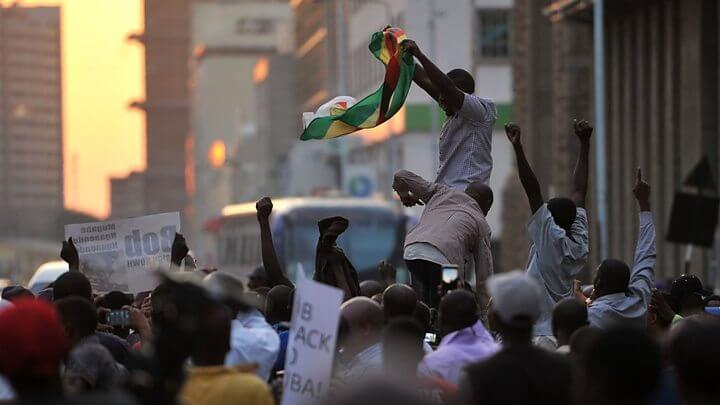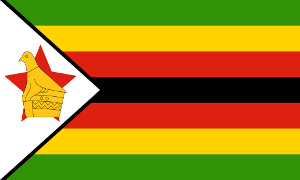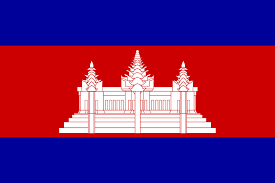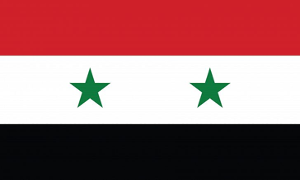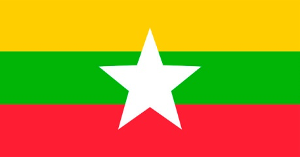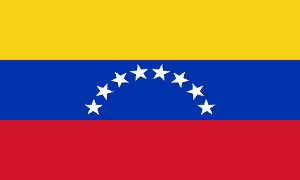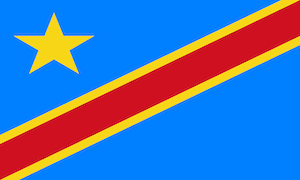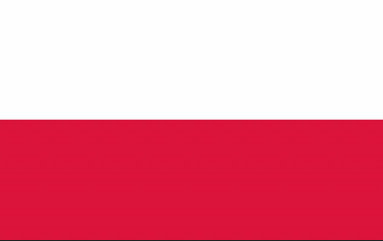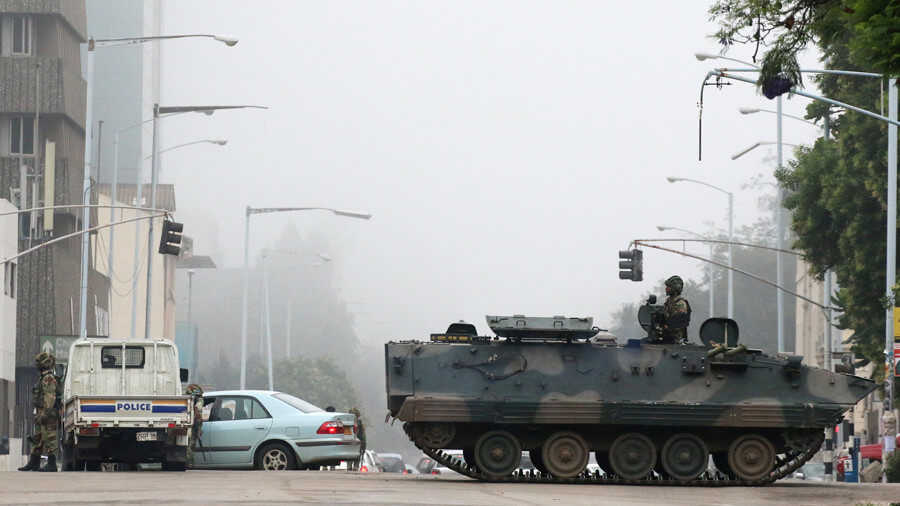Photo Credits: BBC
Published on 23/11/2017
Coup, resignation, celebration-good news or the bad news for Zimbabwe?
Despite the dancing people in the streets of Harare, we must be aware that the coup in Zimbabwe which led to resignation of its long sitting president Mugabe, was not committed in their best interest. Not in the first place, at least. And where most analysis of the recent military intervention focuses on the outcomes of the coup, maybe we should start by realistically looking at its roots. If the ultimate goal is to create a more free and democratic society in Zimbabwe, there is both good news and bad news for the country. Only when we understand that the military intervention is focused on the continuation of ZANU-PF rule in the first place, can we decide what the role of the political opposition, civil society and international community should now be.
Let’s start with the bad news.
The difference between the Party and the State
In Zimbabwe, ruling party and state have been interwoven for over 37 years. With ZANU-PF being supreme over state institutions and -structures, whatever happens in ZANU-PF directly affects the state (Msindo 2016). The lines between the ruling party and the state have become blurred, and as a result of ZANU-PF’s monopoly on power, Zimbabwe has become a de-facto one-party state.
The ruling party uses “both tangible and intangible” state-resources for its campaigns during elections, giving ZANU-PF a decisive advantage over opposition political parties.[i] Furthermore, the party’s thorough control over state institutions such as state-media, the Zimbabwe Electoral Commission, and Registrar General’s Department has enabled ZANU-PF to control the electoral process. Finally, the party obscures the difference between ZANU-PF and Zimbabwean nationalism, in very subtle ways. Funerals of former ZANLA-fighters are turned into state-events, and the Zimbabwean flag is appropriated as a party symbol.[ii]
As much as United Kingdom Foreign Secretary Boris Johnson expressed hope that a “stable and successful Zimbabwe” will emerge from the coup, there is one thing Johnson clearly does not fully understand. The military coup is not about the future of a country, but about the power-structures within the ruling party in the first place. Unfortunately enough for the cheering people in the streets of Harare on Saturday, General Constantino Chiwenga did not have the Zimbabwean citizens on his mind when he drove down Josiah Tongogara Street towards State House late on Tuesday last week.
While the military coup might seem to be focused on those who caused the socio-economic deprivation in the state, what it essentially seeks to do is control the power-structure within the ruling party. The difference between what is good for the ruling party and what benefits the state should therefore be clearly kept in mind when developing scenarios for the roadmap to a more free and democratic Zimbabwe. Despite Major General SB Moyo’s suggestions that the military actions were motivated by “crimes that are causing social and economic suffering in the country”, it was in fact a shifting power-balance in the succession struggle within the ruling party that eventually caused the army to move.
Succession Struggle
This succession struggle dates back to the 2014 purge of former vice-president Joice Mujuru and eight cabinet ministers. Mujuru was said to have become a too powerful force within the party, and was then accused variously of corruption, theft and even plotting to kill President Mugabe. Mujuru and her followers had to go, a practice that is said to be characteristic of Robert Mugabe’s style of ruling ZANU-PF.
When Mujuru was replaced by Emmerson Mnangagwa, a bitter struggle between two factions within the ruling party began, which continued relatively quietly until last week. The so called ‘G-40’-faction represents the younger generation within ZANU-PF, a group of politicians [most notably, Jonathan Moyo, Saviour Kasukuwere and Patrick Zhuwao] without war-credentials. G-40 allegedly backed Mugabe’s wife Grace for the party-leadership, despite the fact that ‘Gucci-Grace’ is not popular among most groups in Zimbabwean society.
On the other hand, is the so called ‘Team-Lacoste’-faction, which backs Mnangagwa as Mugabe’s successor for party-leadership. The former Vice-President has been with Mugabe from the start, as they worked together both during the liberation-struggle as well as during Mugabe’s ruling days. Mnangagwa has a strong following in Zimbabwe’s powerful military and amongst war veterans, and has kept a lot of connections from his days as both Minister of Defense and intelligence chief.
In December, ZANU-PF planned to host its last annual congress before the 2018 elections. As the party-assembly is seen as a decisive event for the future of the party, all contesters for party-leadership have tried to position themselves as best as possible. As several of the G40 faction members were discredited over the last months, Mnangagwa’s hand seemed to play out. However, early this month, the factional infighting took a different turn, as Mugabe openly accused Mnangagwa of “disloyalty, disrespect, deceitfulness and unreliability.”[iii] On November 7, Mugabe fired Mnangagwa. For many, his removal meant that Grace Mugabe was expected to be appointed vice-president at the party congress in December.

Time for Bob to rest now
Why the bad news is so important
From that point onwards, we can clearly see that the conflict out of which the coup came forth is about the party and not about the country. On November 8, before the coup still, War-Veterans leader Chris Mutsvangwa stated that “[President Robert] Mugabe is not the owner of the party.” On that same day, Mnangagwa released a statement saying that he had fled Zimbabwe, lashing out to his President saying that “the ruling ZANU-PF party “is not personal property for you and your wife to do as you please.”
On Monday November 13, Zimbabwe’s army chief Constantino Chiwenga demanded a “stop” to the purge in the ruling party and warned that the military could intervene. Then, very late on Tuesday, soldiers sealed access to parliament, government offices and courts in Harare. Access to the president’s official residence was also blocked by troops, and Robert Mugabe is forced into negotiations about the end of his rule. After Robert Mugabe hijacked these negotiations to postpone his departure from power, an impeachment-procedure started on November 20.
In his Sunday address to the Zimbabwean nation, Robert Mugabe stated that he does “believe that these [issues raised by the military] were raised in the spirit of honesty and out of deep and patriotic concern for the stability for our nation and for the welfare of our people.” Seeing the cheerful and especially diverse and united front of people in the streets of Harare on Saturday, one would almost start to believe that the military decided on their move out of sincere concerns for all of those who came out on Saturday. The truth, however, is different.
The main concern of those who are now being hailed as the revolutionaries of Zimbabwe, not in the last place by the Zimbabweans themselves, is the power of the ruling party over the country. All these clues should clearly show us that this coup was not brought about because several million people are suffering in Zimbabwe, but because a handful of elite saw their power-position being given away by a 93 year old man.
This distinction is of a vital importance, as it emphasizes the risk that the ongoing redistribution of power will not change anything for the people of Zimbabwe. The de-facto one party state; the control of ZANU-PF over the electoral process; the suppression of contentious political claims; the subtle monopolization of Zimbabwean nationalism by ZANU-PF; none of this has changed with the military coup and the appointment of Emmerson Mnangagwa as the new party leader. As Steven Feldstein puts it, “Mnangagwa is massively invested in ensuring his continued and unfettered access to power, which has proven highly lucrative for him. The vice president is “reputed” to be one of Zimbabwe’s richest people. All of this suggests he might become yet another dictator.” Instead of cheering that Mugabe’s days seem to be over, let us focus on the opportunities the current developments offer for more democratically oriented forces to go against a continued ZANU-PF dominated Zimbabwe.
The Good News
As Jason Burke and Emma Graham-Harrison finally expressed in the Guardian on November 20, “the [military] purge has in effect decimated the [G-40] group and underlines the degree to which the overthrow of Mugabe’s 37-year rule has been driven more by competition for power within the ZANU-PF than popular anger at a dictatorial and corrupt regime.” However, this popular anger, or decades of build-up grievances if you will, seems to be able to more and more take over the momentum that the coup has created.
This is where the good news comes in. As we speak, the citizens of Zimbabwe could be hijacking the military coup, turning the elite’s power-quest into a bottom-up demand for a more free and fair Zimbabwe. The call for people to take their frustration over Robert Mugabe’s refusal to step down to the streets might have been insinuated by the military and ZANU-PF elite to make their purge look like the will of the people. However, as Zimbabweans continue to be on the streets of all major Zimbabwean cities, the recent developments in the country have opened up unbelievable opportunities for those forces in Zimbabwean society that can counter ZANU-PF’s continued authoritarian and corrupt rule.
The Zimbabwean military leadership is trying everything they can to make their coup look like something constitutionally legitimate. This is not without a reason. The eye of the world is on Zimbabwe. With the exception of the violence surrounding the 2008 elections, Zimbabwe has been largely ignored by the international media in the last two decades.[iv] That is different now.

Zimbabwean MPs cheered and celebrated as Mugabe’s resignation was announced
Political Opposition
These newly found opportunities are especially beneficial for the Zimbabwean political opposition parties. Only a few months ago, there seemed to be not a single chance for them to play a serious role in next year’s elections. Due to big divides between political parties and coalitions, and a very ill Morgan Tsvangirai desperately holding on to the leadership of the MDC-T, ZANU-PF was looking forward to another walk-over electoral victory in 2018.
Now, the people on the streets of Zimbabwe and their call for democratic change have opened up a window of opportunity. The question is, however, can the opposition regain the trust of the people, which is currently at an all-time low. From field-research conducted earlier this year one can conclude that the hope for a better Zimbabwe that mainly the MDC brought up to 2008 was shattered in the last decade. Especially during and after the period of the Government of National Unity (GNU), that party lost a lot of public support.[v]
The party’s grassroots structures had been badly damaged by the violence preceding the 2008 elections. The actions of the MDC-T during power sharing then damaged the party’s public reputation. The side-lining of civil society from the negotiations not only put tremendous strain on the MDC-T’s relations with the civic movement that had brought it to life, but also eroded the popular support for the Global Political Agreement. Its upper leadership visibly benefiting from participation in the inclusive government[vi] fostered the perceptions that the party had “joined the gravy train”.[vii] The eventual walk-over victory of ZANU-PF in the 2013 elections sealed the fate of the political opposition. A 2017 study by Lekalake shows that trust in opposition politics collapsed, from 64% in 2008 to only 34% in 2014. Personal affiliation with opposition political parties even dropped from 74% in 2008 to 28% in 2014.
End of Political Apathy?
Over the last two decades, the aggressive strategies that characterized the sphere of party-politics in Zimbabwe developed into a heavily polarized society, which was not limited to the political realm. “Zimbabweans viewed political and economic developments through the heavily tinted lens of party affiliation”.[viii] Creating ‘insiders and outsiders’, these short-run strategies of polarization then brought with them intimidation, violence and subsequently fear.[ix]
The inaccessibility of the political realm, combined with the disappointment in the MDC described above, has resulted in political apathy among Zimbabwean citizens. Zimbabwean youth in particular respond to this polarized field of political violence and intimidation by withdrawing from that public political sphere and staying away from political actors and discourses.[x] Citizens would rather accept the inaccessibility of the party-political sphere than run the risk of getting caught up in the violence that it is characterized by, resulting in “the comfort of doing nothing”.[xi]
But with the recent events in Zimbabwe, the tables have turned. With the whole world watching, the party-political sphere cannot be dominated by violence and intimidation any longer. The mass-mobilization we have seen on the weekend, which continued on Monday, is the first proof of a re-engaged citizenry. This is an unprecedented window of opportunity, but it remains doubtful if the opposition parties can regain the trust lost in the last decade.
Chance for Social Movements to step in?
This is where Zimbabwe’s social movements step in. Where the opposition-parties should play the role of the end-vehicle to translate the mobilized momentum into political yields, a broader coalition of democratic forces in Zimbabwe should first ensure that the military coup will not end up a replacement of the one bad guy with another. In seizing the current window of opportunity, Zimbabwean social movements might play a decisive role. Where the current status of the political opposition is at an all-time low, the movements’ 2016 contentious episode is still fresh in memory.
The year 2016 proved their capability to mobilize a big part of the Zimbabwean citizenry. With #ThisFlag and #Tajamuka/Sesjikile as the main protagonists, the latest episode of social movements in Zimbabwe was able to let Zimbabwean citizens make unprecedented contentious political claims against their repressive government. Field-research carried out in Zimbabwe between March and June 2017 abstracted some of the most important factors which made this mobilization possible.
What was essential for mainly the #ThisFlag-movement in 2016 was a revaluation of active citizenship, as an alternative for participation in the party-political landscape. Values of boldness, framed as “holding the government to account without fear or favor,”[xii] and a renewed love for one’s country, opposed to selfish interests of the ruling elite, created a clear identity-divide between the movements, and those they fought against.[xiii] Today, this clear identity-divide is of essential importance to not mistake power-hungry elites for Zimbabwe’s new liberation heroes, as described in the beginning of this article.
Furthermore, part of the repressive circumstances, which made the 2016 protests such a surprising phenomenon, could be said to no longer stand in the way of mass mobilization. With the whole international community watching, ZANU-PF cannot use their repressive tactics in the way they did openly in 2008, and a little bit more hidden in 2013. Also, the low-threshold methods #ThisFlag had to offer for citizens to be able to participate in protest have now become unnecessary. If a broad spectrum of civil society actors can continue the momentum of a citizenry which seems ready to take the streets and stand for democratic changes, while the whole world is watching, that might be able to force the ruling party to allow them/the political opposition a seat at the table.[xiv]
Every Crisis Forms an Opportunity!
The parallels with a different revolution that happened in 2011 are crystal clear. After mass protests in the streets of Cairo, the military abused the Egyptian citizens by hijacking their revolution. While the people of Egypt thought they were changing their country, the military interference silently turned their “purpose” into one which legitimized internal power struggle within ruling elite, hiding it as a ‘people’s revolution’. Do we recognize this from somewhere? Eventually, the bad guy was kicked out, only to pave the way for another strongman in the making and people started being suppressed again as soon as they left the streets.
In the last week, the Zimbabwean citizens stood up and started to mobilize for that change. But a hijacking is dangerously close again. Mugabe’s resignation is not the people’s victory yet, because also here we could see one dictator being replaced by another. That is why now, the political opposition and social movements, supported by the world’s eye focused on Zimbabwe, should push as hard as they can to translate the current excitement into political concessions by the ruling party.
The way to do that would be by actively leading the “awakening of the people” and make sure that the most important problems of Zimbabwean society – such us democracy, human rights, political and social oppression and economic reforms – are on the top of the list during the transition process that will be taking place in next few months.
Anyone inclined to see the results of this strategy, might have to consider looking beyond the 2018-elections. Real political reform through cultural alteration in Zimbabwe will prove to be a marathon rather than a sprint. However, the current momentum provides an opportunity for short-term impact, and opposition political parties, social movements and other civil society actors should not let that opportunity get away. The Zimbabwean revolution should not be about Uncle Bob vs. The Crocodile – it should be about turning a suffering country away from the path of dictatorship and despair.
Bibliography:
Aeby, Michael (2016), “Making an impact from the margins? Civil society groups in Zimbabwe’s interim power-sharing process”, Journal of Modern African Studies, 54.4, 703728.
Chigora, Guzura and Ndimande (2015). The Zimbabwe African National Union – Patriotic Front (ZANU PF) Regime in Power in the 21st Century: A Question of Popular Support or Preserving Power by Undemocratic Means, International Journal of Politics and Good Governance Volume VI, No. 6.3 Quarter III 2015
Kagoro, Brian (2005) “The prisoners of hope: Civil Society and the opposition in Zimbabwe”, African Security Review, 14:3, 19-29.
LeBas, A. (2006), “Polarization as craft: party formation and state violence in Zimbabwe”, Comparative Politics, 419-438
LeBas, A. (2014), “The perils of power sharing”, Journal of Democracy, 25(2), 52-66.
Lekalake, R. “Popular views of the opposition in Southern Africa’s one-party dominant regimes”, AfroBarometer Policy Paper Nr. 38, February 2017, online via afrobarometer.org
Msindo, E. (2016). Factionalism and Robert Mugabe’s Leadership in Zimbabwe. Governance and the Crisis of Rule in Contemporary Africa, 147-172.
Oberdorf, J. P. R. A. (2017). Inspiring the Citizen to be Bold: Framing Theory and the Rise and Decline of the# ThisFlag-movement in Zimbabwe (Master’s thesis).
Oosterom, M. A. and Lloyd, Pswarayi, “Being a Born-free. Violence, Youth and Agency in Zimbabwe”, Institute of Development Studies Research Report 79, December 2014, online via ids.ac.uk
Raftopoulos, Brian (2013) “The 2013 Elections in Zimbabwe: The End of an Era”, Journal of Southern African Studies, 39:4, 971-988.
Raftopoulos, Brian (2014), “Zimbabwean Politics in the Post-2013 Election Period”, Africa Spectrum, 49, 2, 91-103.
Ranger, T. (2004), “Nationalist historiography, patriotic history and the history of the nation: The struggle over the past in Zimbabwe”, Journal of Southern African Studies, 30(2), 215234.
Notes:
[i] Chigora, Guzura and Ndimande 2015: 10
[ii] Ranger 2004, Oberdorf 2017: 39
[iii] Earlier this month, a documentary is leaked, allegedly made by Education Minister Mojo, outlining how Mnangagwa would have subverted and captured State-institutions in a power grab.
[iv] See Coltart (2008: 9) for a reflection on the reasons for this. In the instances Zimbabwe is covered by international media, the conflict is mainly used as an arena in which the battle over meaning and definition of the crisis on a macro-level takes place, rather than a platform to tell the story of the Zimbabwean struggle at a micro-level. See for example Williams (2005) on the British media reporting on Zimbabwe.
[v] Raftopoulos 2013: 984-985, 2014: 98
[vi] LeBas 2014: 60, 2016: 4
[vii] Aeby 2016: 719
[viii] LeBas 2006: 420
[ix] LeBas 2014: 53-54
[x] Oosterom & Pswarayi 2014: 47
[xi] Kagoro 2005: 21
[xii] Evan Mawarire, “Rehearsing the #ThisFlag six core values”, 22 of July 2016, Accessed 10 July 2017, online via instagram.com/thisflag_zw, 26th of July 2016, also see thisflag1980.com/our-values
[xiii] Oberdorf 2017: 37-38
[xiv] Besides #ThisFlag and #Tajamuka/Sesjikile, there have been other social movement making waves in Zimbabwe for the past two years. Some which have to be considered are the National Vendors Union Zimbabwe (NAVUZ), Occupy Africa Unity Square (OAUS), and #ZimbabweYadzoka (focused on the rural communities of Zimbabwe).
